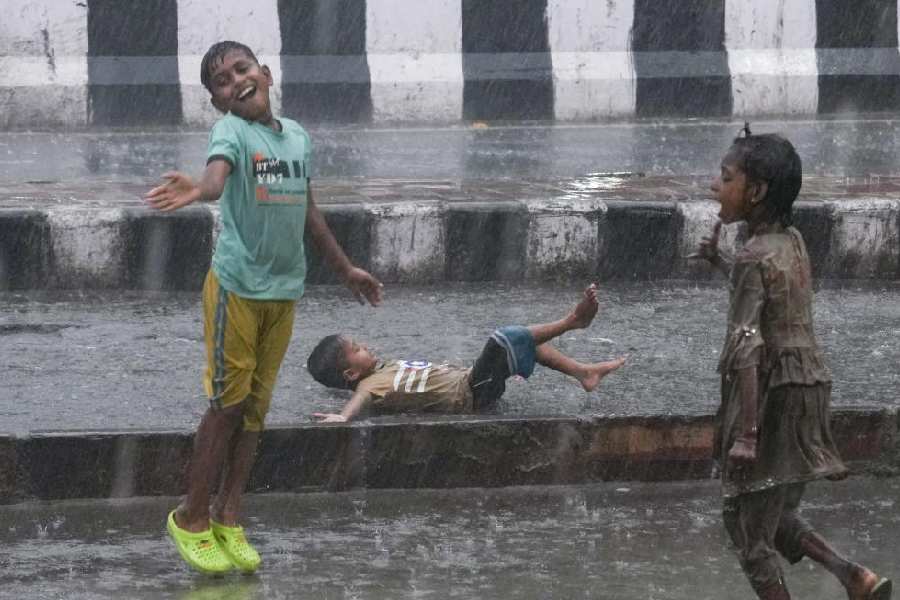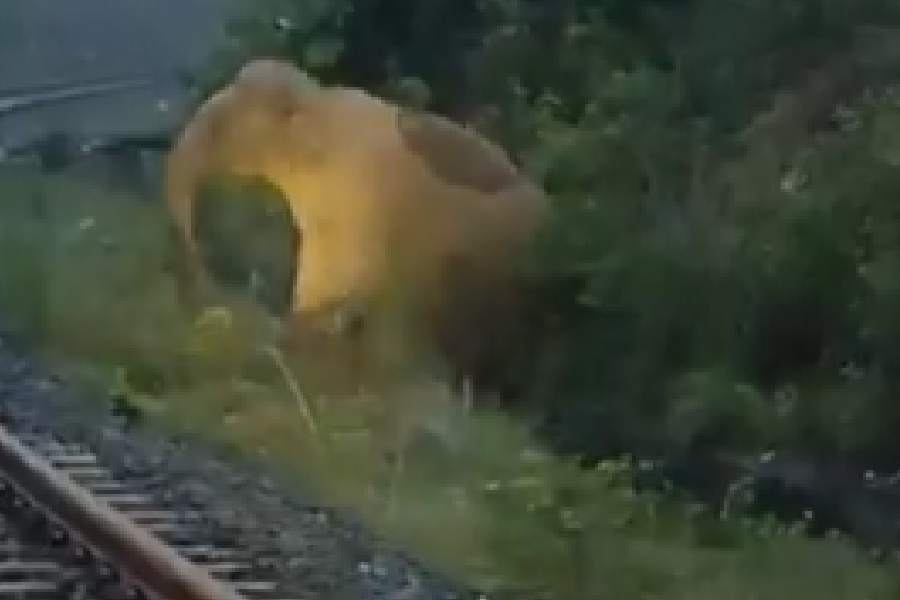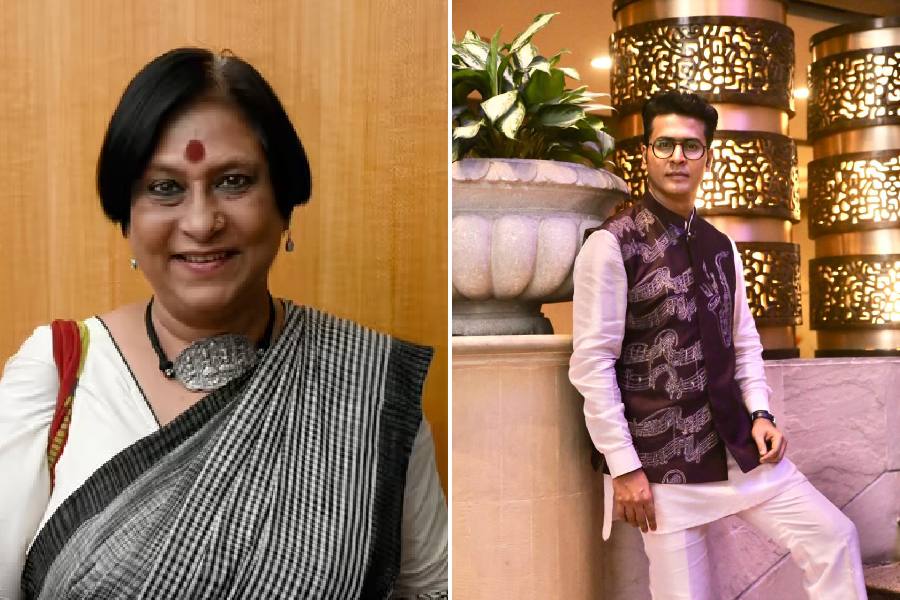 |
| Sri Aniruddhadeva Centre building at Dibrugarh University. Picture by UB Photos |
The diverse critical views on the Moamariya rebellion, led by Shri Shri Aniruddhadeva, have led to its cult status
The writer is a professor, Shri Shri Aniruddhadeva chair, department of history, Dibrugarh University
Shri Shri Aniruddhadeva (1553-1626) is one of the prominent Vaishnava preceptors of Assam of the post-Sankardeva period. He received initiation from Gopaldeva of Bhabanipur (1541-1611), who was a disciple of Madhavdeva (1498-1596). He first founded his satra at his own village called Vishubalikunchi near Narayanpur in the present Lakhimpur district of Assam in 1601 AD but later (in 1606) shifted it to Naharati, 9 km south of the present Bihpuria of the same district, owing to the raids of the nishis (dafalas).
A man of radical outlook, Aniruddhadeva made the depressed communities and tribes like the Kaivartas, Haris, Nadiyals and Kacharis, including the poor artisans the target of his missionary activities. Following Sankardeva and Madhavdeva, he also gave initiation to a Muslim tailor named Sheli, renamed as Dhyanapati. He placed these disciples on an equal footing with the caste-Hindus and mixed freely with them, which made him immensely popular in the common circle. For this, he was severely criticised by his contemporaries, but he accepted all challenges with courage and determination. He fostered among his disciples a strong community feeling and thereby greatly contributed towards social formation in upper Assam, in particular.
Aniruddhadeva was a literary genius and an expert musician. He rendered into Assamese the 5th skandha of the Bhagawata and composed the Puranjan Upakhyan based on the contents of the 25th to 31st chapters of the 4th skandha of the above text. Besides, he authored a religious text called Bhakti Mangal Ghosa in 805 verses in line with Madhavdeva?s namghosha. He wrote another text called Nij-Sastra in both prose and verse for the senior disciples, who learnt the fundamentals of Vaishnava philosophy. Its recitation, however, is still confined to this class of devotees and the text is considered a secret one. Aniruddhadeva?s mastery over music is evident by the fact that he had not only composed 182 devotional songs but had also prescribed raga for each of them.
The disciples of Aniruddhadeva came to be known as Moamariya or Mayamoriya and the satra as Maomara or Mayamara. They have a distinct place in the history of late medieval Assam because they organised the first popular rebellion against the Ahom monarchy in 1769, which in course of time paved the way to its downfall and implementation of the British rule in Assam. For this, the Mayamara satra and its gurus were held responsible. Consequently, not only the disciples of Aniruddhadeva, but also the guru himself were severely condemned. The other reason for which the Mayamara Satras got alienated from other satras was that it accepted mainly the depressed people to its order. As a result, Aniruddhadeva remained in the backlog of study and research.
The situation, however, changed with the publication of a biography of Aniruddhadeva entitled Shri Shri Aniruddhadeva Charit Aru Mayamara Satra Gosainsakalar Vamsavali by the Mayamara hit Sadhani Sabha in 1933. It was composed by Chidananda Goswami, the 16th adhikar of the Mayamara satra, during the period 1866 to 1880. The publication of this work at the initiative of Hridayananda Goswami, the then adhikar of the Mayamara Dinjoy satra, opened the door for research on Aniruddhadeva, the Mayamara Vaishnava society and the Moamariya rebellion. Even before its publication, Rajani Kanta Bordoloi, a noted litterateur of Assam, wrote a long article entitled Mayamariasakalar Bisaye in six parts in the Avahan, quoting profusely from the said biography.
The first scientific attempt, although in a limited scale, to study Aniruddhadeva and the Moamoriya rebellion was made by S.K. Bhuyan in his Anglo-Assamese Relations: 1771 to 1826, published in 1949. Bhuyan collected source materials not only from the Ahom and Assamese buranjis but also from British records. He also used Maniram Dewan?s Buranji Vivek Ratna, Vol II, which contains a mass of information regarding Aniruddhadeva and the Moamariya rebellion.
After him, Maheswar Neog evinced interest in the problem. In the last chapter of his Shri Shri Sankardeva (1958), he discusses briefly the relation of the Mayamara Satra with the Ahom government and interprets the Moamariya rebellion as a crusade or religious war. He authored an important work entitled Socio-Political Evince In Assam Leading To The Militancy Of The Mayamariya Vaishnavas (1992), which is of invaluable help in understanding the social significance of this historic event. On the other hand, according to Dimbeswar Neog, ?The Maomariya rebellion was the first socio-political event in the history of Assam made for the people and by the people? (New Light On The History Of Asamiya Literature, 1962). In 1966, was published S.N. Sarma?s Neo-Vaishnavite Movement and Satra Institution of Assam, which contains an analytical treatment on Aniruddhadeva and the relation of Mayamara Satra with the Ahom state. In the same year, Nakul Chetia?s Mahapuruah Shri Shri Anirudhhadeva Dharmamat Aru Mayamara Samaj was published.
Utsavananda Goswami?s Malou Patharar Buranji (1968) containing information on the presages of the first Moamariya rebellion is another noted work.
Amalendu Guha made a Marxist interpretation of the Moamariya rebellion as a peasant uprising against the feudal structure of the Ahom government. His monograph Vaishnavabadar Para Mayamariya Bidrohaloi appeared as a serial in Amar Pratinidhi during the late seventies, which came out in a book form in 1993 under the same title.
Since the eighties of the last century, a number of scholars and leading personalities of the Mayamara Vaishnava society have been contributing articles related to Aniruddhadeva, Moamariya rebellion to different journals and souvenirs. Comprehensive research in Aniruddhadeva emerged in Assam when a chair in the name of the saint was instituted in the department of history, Dibrugarh University, in 1992 with fund provided by the state government. The objective of the chair is to study the life and activities of Aniruddhadeva and his successors as well as the socio-economic condition of the backward disciples of the Mayamara Satra. Subsequently the curriculum of the chair would cover the history and culture of the people of the region.
In 2004, the birth anniversary of Shri Shri Aniruddhadeva was held in the university campus on a central basis under the auspices of the chair. It provided a forum to the representatives of different satras and namghars of Mayamara Vaishanava society to have a get-together and exchange their views. In that opportune moment, a call was given by the head of the Kamalabari Satra to all religious heads to get united under the banner of the Shri Shri Aniruddhadeva Chair to work for peace and prosperity of the people of the Northeast and to promote study and research on the Bhakti movement and allied topics.











